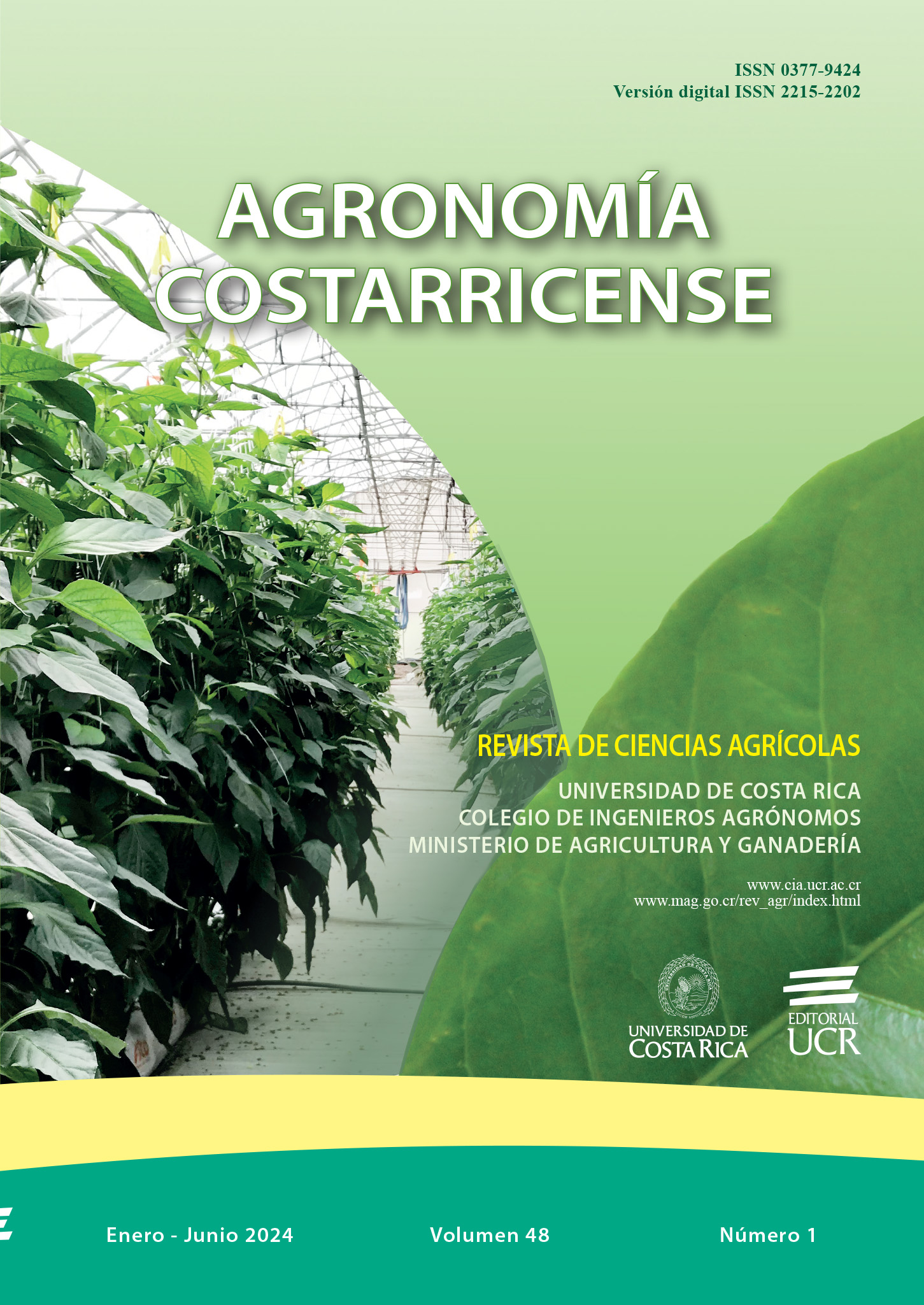Abstract
Introduction. Forage sweet sorghum plants (Sorghum bicolor L. Moench) are characterized by tall height; however, this attribute and variable weather conditions favor the overturning of the plants and make the mechanized harvest of lots difficult for certified seed production, leading to the low availability of quality seed of this species. Objective. As an alternative to this problem, the effect of 3 growth retardants were tested. The production quality seed, growth parameters, plant settling, and seed yield were evaluated. Materials and methods. The research was carried out in 2 locations located in the warm upper Magdalena Valley and the dry Caribbean of Colombian. A complete block design was used, randomized with 3 repetitions and 6 treatments was used, consisting of the application of variable doses of ethephon, mepiquat chloride, and trinexapacethyl in 2 plant development stages (1 and 3). Results. In both environments, the application of trinexapac-ethyl at a rate of 200 g i.a.ha-1 had a greater effect on reduction of plant height and a reduction of 89.2 in the percentage of toppling compared to the control in the dry Caribbean Colombian location, which increased seed yield by approximately 3 times compared to the control in this locality and without significant differences compared to the control in the warm upper Magdalena valley location. Conclusion. The results of this evaluation allow us to conclude that the use of trinexapac-ethyl is an alternative for the production of quality sweet forage sorghum seed and to reduce plant height and in therefore plant overturning. The observed response was dependent of the type of growth retardant and edaphoclimatic conditions.
##plugins.facebook.comentarios##

This work is licensed under a Creative Commons Attribution-NonCommercial-NoDerivatives 4.0 International License.
Copyright (c) 2024 Agronomía Costarricense


